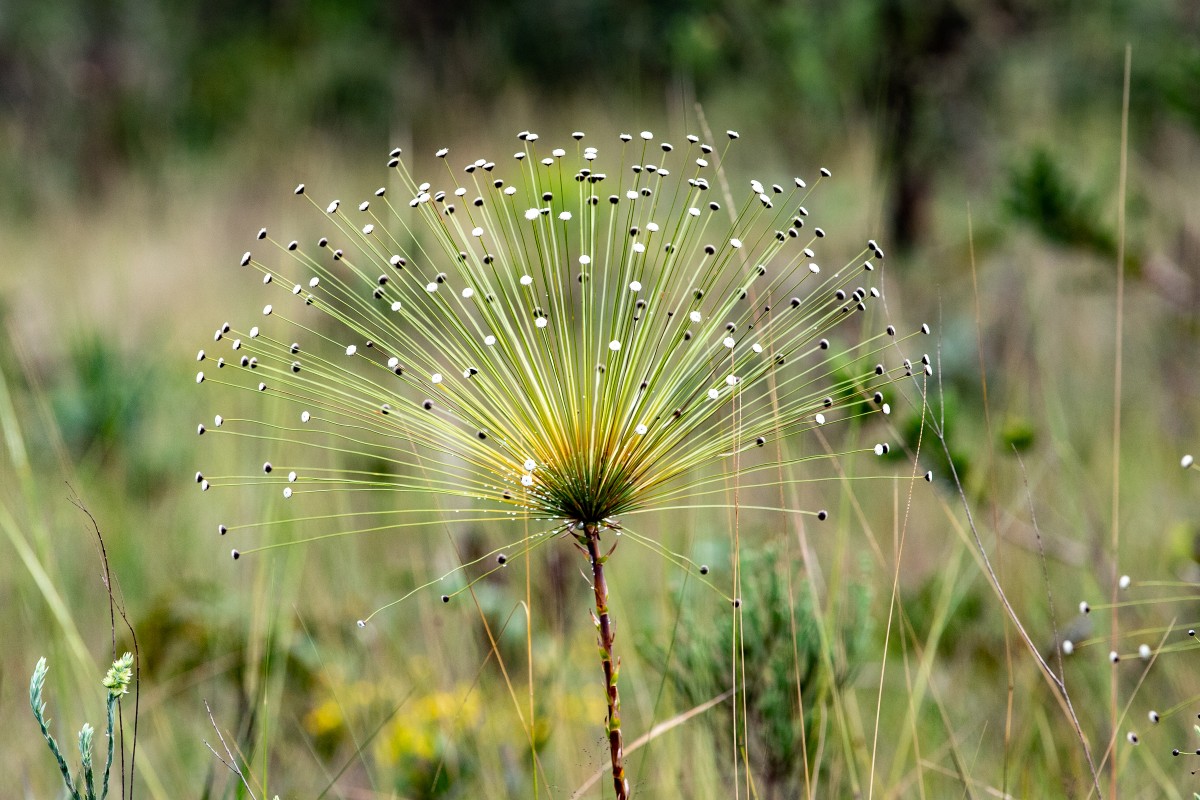Climate change and weak policies endanger Brazil’s Cerrado endemic flora
Brazil’s Cerrado, one of the most biodiverse savannas on Earth, is already suffering record levels of land conversion and now faces intensifying climate pressures like extreme drought. A new study warns that, without stronger conservation policies, the combined forces of climate change and habitat loss could drastically reshape the distribution of the Cerrado’s threatened endemic flora by 2050. October 8, 2025
A new study led by Emilly Layne Martins do Nascimento (PhD candidate), and co-authored by Dr. Geiziane Tessarolo, Dr. Aline Soterroni, together with an international team of researchers, used scenario modelling to examine how future climate projections intersect with land-use change scenarios linked to different levels of Brazil’s Forest Code implementation — the country’s main law for protecting native vegetation — and what this means for the Cerrado’s endemic flora.
The findings are stark: by mid-century, species distribution losses could average 33% in optimistic scenarios and exceed 41% in pessimistic ones. The southern, southeastern, and central Cerrado — today rich in biodiversity — are projected to be the hardest hit. In some scenarios, key endemic plant species may see their entire potential habitat disappear, effectively pushing them to extinction.
“Regions with the highest biodiversity will also be the hardest hit. Without effective protection, the risk of local extinctions will be high,” warns Emilly.
At the heart of the problem lies a dangerous feedback loop: land-use change, the main driver of biodiversity loss, fragments habitats and weakens ecosystems, while climate change intensifies these vulnerabilities, leaving already degraded systems even more fragile. And Brazil’s Cerrado is not just a biodiversity hotspot! It underpins climate regulation, water security (particularly for hydropower), and food production for Brazil and beyond. The loss of species threatens vital ecosystem services — from clean water to carbon storage — with direct impacts on millions of people.
“This study connects climate change and biodiversity loss in the Cerrado. An integrated approach like this is essential to deliver science-based insights for conservation policies that minimize trade-offs and identify synergies”, stresses Aline.
The study also highlights the crucial role of governance. Full implementation of the Forest Code reduces biodiversity loss in Brazil, but it is still not enough to prevent steep declines in the Cerrado. Partial or weak enforcement, on the other hand, could magnify the impacts of climate change and accelerate biodiversity loss. To secure the Cerrado’s future, complementary measures are needed: ecological restoration, habitat corridors, and stronger protection for remaining natural areas.
“Our study shows that there is still time to act — but it is urgent to strengthen policies, enforcement, and conservation strategies to preserve the Cerrado for future generations,” concludes Geiziane.
Read the full article on ScienceDirect: Climate change and feeble governance threaten the endangered endemic Cerrado flora in Brazil
